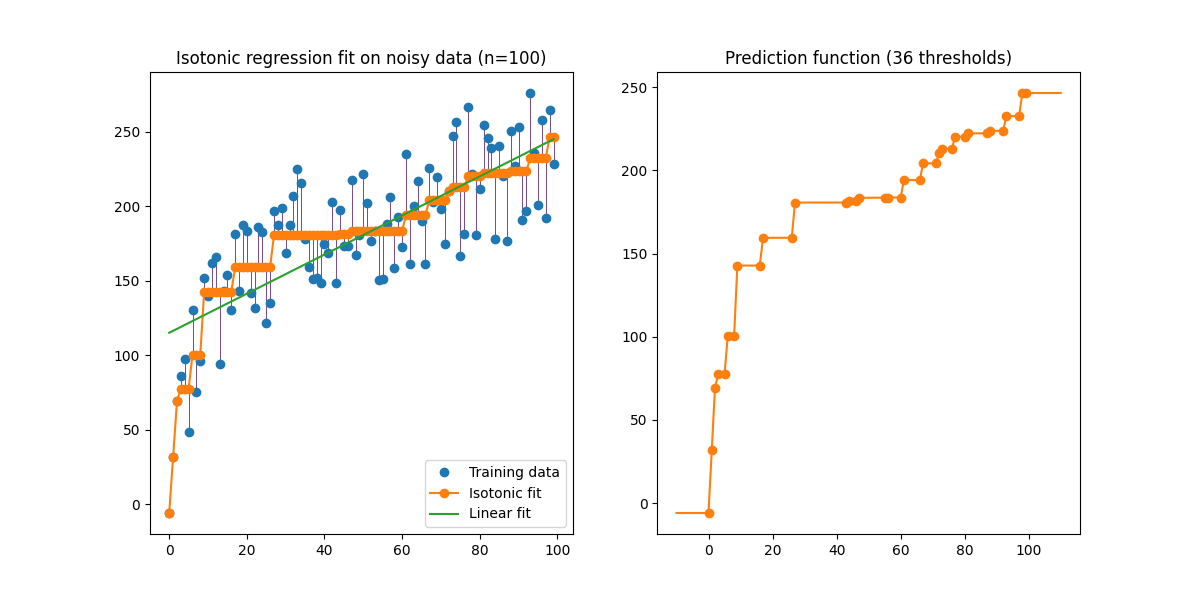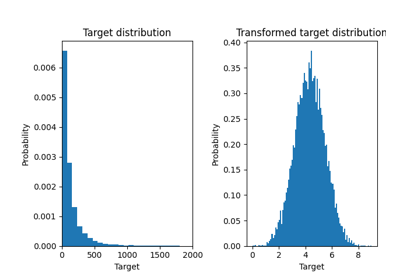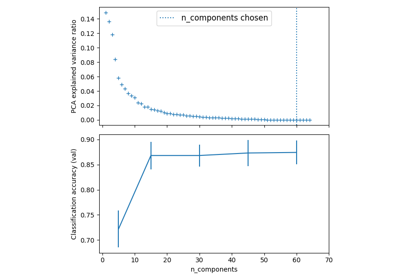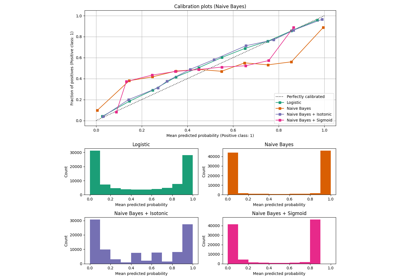备注
Go to the end 下载完整的示例代码。或者通过浏览器中的MysterLite或Binder运行此示例
保序回归#
生成数据的等序回归的说明(非线性单调趋势和同向均匀噪音)。
等张回归算法找到函数的非递减逼近,同时最大限度地减少训练数据的均方误差。这种非参数模型的好处是,除了单调性之外,它不会为目标函数假设任何形状。为了进行比较,还提供了线性回归。
右侧的图显示了阈值点线性插值产生的模型预测函数。阈值点是训练输入观察的子集,其匹配目标值通过等张非参数匹配来计算。
# Authors: The scikit-learn developers
# SPDX-License-Identifier: BSD-3-Clause
import matplotlib.pyplot as plt
import numpy as np
from matplotlib.collections import LineCollection
from sklearn.isotonic import IsotonicRegression
from sklearn.linear_model import LinearRegression
from sklearn.utils import check_random_state
n = 100
x = np.arange(n)
rs = check_random_state(0)
y = rs.randint(-50, 50, size=(n,)) + 50.0 * np.log1p(np.arange(n))
适合IsotonicRegistry和Linear Registry模型:
ir = IsotonicRegression(out_of_bounds="clip")
y_ = ir.fit_transform(x, y)
lr = LinearRegression()
lr.fit(x[:, np.newaxis], y) # x needs to be 2d for LinearRegression
情节结果:
segments = [[[i, y[i]], [i, y_[i]]] for i in range(n)]
lc = LineCollection(segments, zorder=0)
lc.set_array(np.ones(len(y)))
lc.set_linewidths(np.full(n, 0.5))
fig, (ax0, ax1) = plt.subplots(ncols=2, figsize=(12, 6))
ax0.plot(x, y, "C0.", markersize=12)
ax0.plot(x, y_, "C1.-", markersize=12)
ax0.plot(x, lr.predict(x[:, np.newaxis]), "C2-")
ax0.add_collection(lc)
ax0.legend(("Training data", "Isotonic fit", "Linear fit"), loc="lower right")
ax0.set_title("Isotonic regression fit on noisy data (n=%d)" % n)
x_test = np.linspace(-10, 110, 1000)
ax1.plot(x_test, ir.predict(x_test), "C1-")
ax1.plot(ir.X_thresholds_, ir.y_thresholds_, "C1.", markersize=12)
ax1.set_title("Prediction function (%d thresholds)" % len(ir.X_thresholds_))
plt.show()

请注意,我们明确通过了 out_of_bounds="clip" 致的构造者 IsotonicRegression 以控制模型在训练集中观察到的数据范围之外进行外推的方式。这种“削波”外推可以在右侧的决策函数图上看到。
Total running time of the script: (0分0.125秒)
相关实例
Gallery generated by Sphinx-Gallery <https://sphinx-gallery.github.io> _




